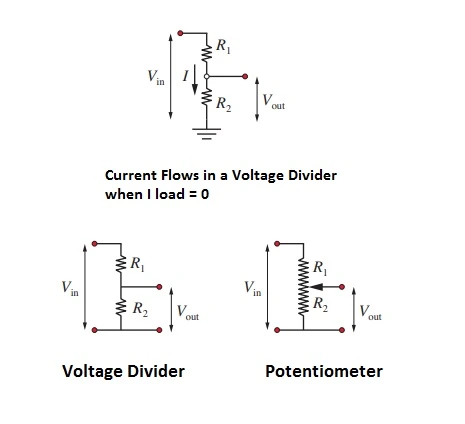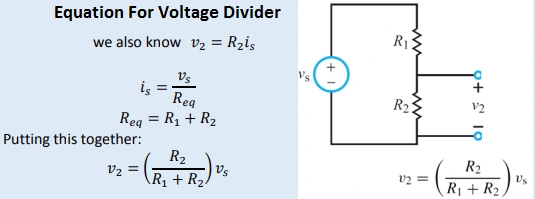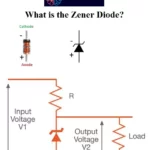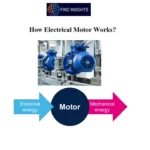
Formula for Voltage Divider – Introduction
Voltage dividers & Potentiometers are passive circuit components that provide a simple way to convert a DC voltage level to another, lower, DC voltage level. Let’s see the Working & Formula for Voltage Divider Rule.
What are Voltage dividers?
A Voltage divider consists of two resistors in series with a voltage tap between the two resistors. The Input voltage, Vin, is applied across R1 and R2. The output voltage, Vout, is the voltage drop across R2. Vout is less than Vin because the total voltage across R1 and R2 must add up to Vin.

Voltage dividers and potentiometers are passive in the sense that they transform Vin to Vout without a separate source of power. Any power consumed during the transformation comes from the source of the input voltage. In contrast, an active component requires an external source of power to operate. Because voltage dividers and potentiometers are passive, these devices can only decrease the voltage, i.e., Vout is always less than Vin. Boosting the voltage from Vin to a higher level Vout requires an amplifier, which is an active component.
Deriving Formula for Voltage Divider Rule
A potentiometer is a voltage divider that allows adjustment of Vout. Typical potentiometers have sliders or rotary knobs that move a contact called a wiper along the surface of a resistor. The wiper divides a single, fixed resistor into R1 and R2. By sliding the wiper along the fixed resistor, the value of R2 is changed, which allows the output voltage to be adjusted from 0 to Vin.
Formula For Voltage Divider

Consider the circuit as shown in figure. There is only one current flowing around the loop, is. We know that:
This is the formula for voltage divider rule. Namely, the voltage across a resistor in series with other resistors is the ratio of that resistor to the total resistance of all resistors, multiplied by the total voltage across all the resistors.
LIKE WHAT YOU’RE READING?
CHECK OUT SOME OF OUR OTHER GREAT CONTENT HERE:
- LVDT- CONSTRUCTION, WORKING PRINCIPLE , APPLICATIONS, ADVANTAGES, AND DISADVANTAGES
- HOW AN IGBT WORKS?
- SCR VI CHARACTERISTICS EXPLAINED IN DETAIL
- STEP UP TRANSFORMER: DEFINITION, CONSTRUCTION, WORKING & APPLICATIONS
- LIMITATIONS OF OHM’S LAW
- STRAIN GAUGE WORKING PRINCIPLE
- WHAT IS OPERATING SYSTEM AND ITS TYPE
- WHAT ARE THE USES OF CAPACITOR
- POWER FACTOR IMPROVEMENT METHODS
- WHAT IS THE ZENER DIODE? – EXPLAINED
- FORMULA FOR ELECTRICAL CURRENT – EXPLAINED
- DEFINITION & FORMULA OF POWER IN ELECTRICAL
- DEFINITION FOR ELECTRICAL CIRCUIT
- VOLTAGE DEFINITION, FORMULA & UNIT



9 Comments